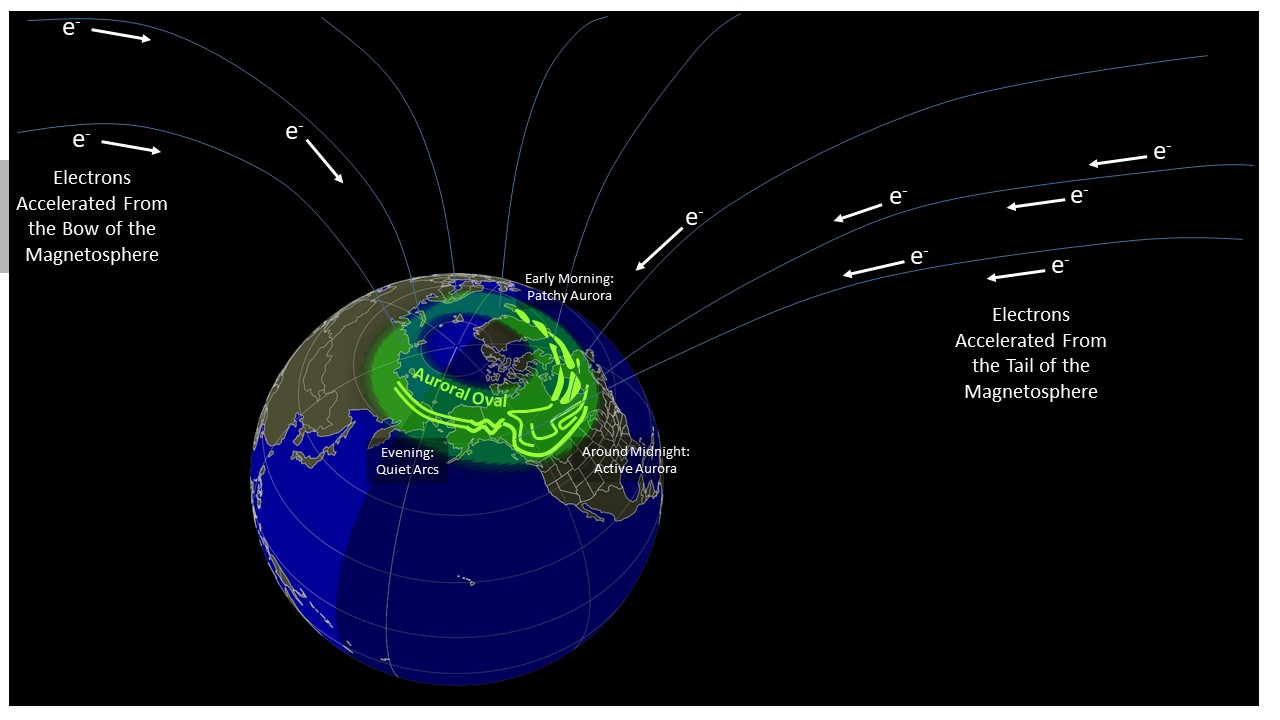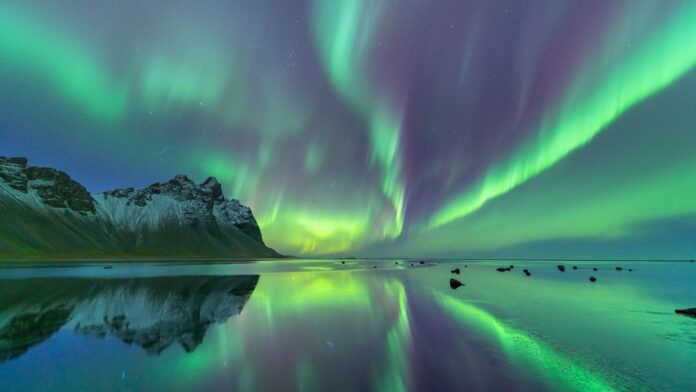The Aurora Borealis, or Northern Lights, captivates with its breathtaking displays of color and movement in the night sky. This article delves into the mesmerizing world of the Aurora Borealis, unraveling the scientific principles that illuminate this natural phenomenon. We explore the various factors that influence its appearance, from solar activity to atmospheric conditions, and examine the diverse colors and shapes that characterize these celestial dances. Additionally, the article touches on the historical and cultural significance of the Aurora Borealis, offers insights on the best viewing locations and times, and provides practical tips for photographing this awe-inspiring spectacle. Finally, we look ahead to future research and discoveries in aurora science.
Come explore this topic with uzocn.com for a deeper understanding.
1. Introduction to the Aurora Borealis
The Aurora Borealis, often referred to as the Northern Lights, is one of nature’s most extraordinary phenomena, captivating viewers with its stunning light displays across the polar skies. This natural spectacle occurs when charged particles from the sun, known as solar wind, collide with Earth’s magnetic field and atmosphere. These collisions create bursts of light, painting the sky in hues of green, pink, red, and violet. Visible primarily in high-latitude regions near the Arctic, the Aurora Borealis has fascinated humans for centuries, inspiring countless myths and legends. Its ethereal beauty and dynamic movement offer a rare glimpse into the interactions between our planet and the sun, blending scientific wonder with artistic splendor. Understanding this phenomenon not only enhances our appreciation of nature’s artistry but also highlights the complex interplay between cosmic and terrestrial forces.
2. Scientific principles behind the Aurora Borealis
The Aurora Borealis is driven by interactions between solar wind and Earth’s magnetic field. Solar wind, a continuous stream of charged particles ejected by the sun, travels through space and reaches Earth’s magnetosphere. When these particles collide with gases in Earth’s atmosphere, such as oxygen and nitrogen, they transfer energy, which is then emitted as light. This process begins when solar particles are guided towards the polar regions by Earth’s magnetic field.
In the atmosphere, these particles excite gas atoms and molecules, causing them to release photons in various colors. The specific colors depend on the type of gas and its altitude. For instance, oxygen at higher altitudes can emit red and green lights, while nitrogen can produce purples and blues. The interplay of these emissions creates the vibrant, shifting displays of the Aurora Borealis. The intensity and extent of the auroras are influenced by solar activity, including solar flares and coronal mass ejections, which increase the number of particles interacting with Earth’s atmosphere.

3. Factors influencing the appearance of the Aurora Borealis
The appearance of the Aurora Borealis is influenced by a combination of solar and terrestrial factors. Key among these is solar activity, particularly solar flares and coronal mass ejections (CMEs). These events release large quantities of charged particles into space, which increase the intensity and frequency of auroras. The strength of the solar wind and its interaction with Earth’s magnetic field play a crucial role in determining the visibility and brightness of the auroras.
Earth’s magnetic field and atmospheric conditions also significantly impact the appearance of the Aurora Borealis. The magnetic field directs charged particles towards the polar regions, where they interact with atmospheric gases. Variations in Earth’s magnetic field strength can affect the spatial distribution of the auroras.
Additionally, atmospheric conditions such as cloud cover and light pollution can hinder visibility. Clear, dark skies away from city lights provide the best viewing conditions. The time of year is another factor; auroras are more commonly observed during the winter months when nights are longest and skies are darkest. Seasonal variations in geomagnetic activity, influenced by the solar cycle, also impact the frequency and intensity of auroral displays. Together, these factors create the dynamic and ever-changing spectacle of the Aurora Borealis.

4. Different colors and shapes observed in the Aurora Borealis

The Aurora Borealis displays a mesmerizing array of colors and shapes, each resulting from different interactions between solar particles and atmospheric gases. The most common color is green, produced by excited oxygen atoms at lower altitudes, typically around 100 to 200 miles above Earth’s surface. Red hues occur when oxygen atoms at higher altitudes, above 200 miles, are excited, emitting light in the red spectrum.
Purple and blue colors arise from nitrogen molecules that emit light when excited by charged particles. These colors are less common but can create stunning contrasts against the predominantly green auroras. The shapes of the aurora vary widely, including arcs, bands, and curtains. Arcs are often seen as curved lines across the sky, while bands appear as broad, horizontal lines. Curtains, or ray-like structures, can undulate and shift, creating a dynamic, flowing effect. The interplay of these colors and shapes creates the dramatic, ever-changing displays of the Aurora Borealis, making each viewing experience unique.
5. Historical and cultural significance of the Aurora Borealis

Throughout history, the Aurora Borealis has held significant cultural and historical importance in various societies. Ancient civilizations often viewed the Northern Lights as omens or messages from the gods. In Norse mythology, the auroras were believed to be the shining shields of the Valkyries, warrior maidens who guided fallen heroes to Valhalla. For Indigenous peoples in the Arctic, such as the Sámi and Inuit, the auroras were integral to their folklore and spiritual practices. The Sámi people, for example, considered the lights as the spirits of their ancestors, while the Inuit believed they were the reflections of great walrus tusks.
In more recent times, the Aurora Borealis has inspired scientific curiosity and exploration. Early astronomers and scientists sought to understand the phenomenon, contributing to the development of atmospheric and space sciences. The lights continue to captivate modern audiences, symbolizing the beauty and mystery of the natural world. The Aurora Borealis remains a powerful reminder of humanity’s connection to the cosmos and the enduring allure of our planet’s natural wonders.
6. Best locations and times for viewing the Aurora Borealis
To witness the Aurora Borealis, choosing the right location and time is crucial. The best viewing locations are typically found in high-latitude regions close to the Arctic Circle. Notable places include Tromsø in Norway, Reykjavik in Iceland, and Yellowknife in Canada. These areas offer optimal conditions due to their proximity to the magnetic poles where auroras are most frequent.
Timing is equally important. The Aurora Borealis is most visible during the winter months, from late September to early April, when the nights are longest and skies are darkest. December and January, in particular, provide the longest nights and often the most spectacular displays. Clear, dark skies away from light pollution enhance visibility, so remote areas with minimal artificial lighting are ideal.
The auroras are also influenced by solar activity, which follows an approximately 11-year cycle. For the best chance of seeing a vibrant display, monitor aurora forecasts and solar activity reports, and plan trips around periods of high solar activity. By combining these elements, viewers can maximize their chances of experiencing the breathtaking beauty of the Aurora Borealis.
7. Tools and resources for tracking Aurora forecasts
Tracking Aurora Borealis forecasts involves utilizing several tools and resources to predict and enhance your viewing experience. Websites and apps dedicated to aurora forecasting, such as the Aurora Watch, Space Weather Prediction Center, and Aurora Service, provide real-time data and alerts on solar activity and geomagnetic conditions. These platforms use satellite data and magnetic field measurements to predict aurora visibility.
Additionally, aurora forecasting apps like My Aurora Forecast and Aurora Alerts offer user-friendly interfaces with notifications and local viewing conditions. For detailed information, the NOAA Space Weather Prediction Center offers comprehensive reports on solar wind and geomagnetic storms that affect aurora activity.
Local weather forecasts are also essential for planning, as clear skies are necessary for optimal viewing. Combining these resources allows enthusiasts to stay informed about the best times and conditions for witnessing the Aurora Borealis, maximizing the chances of experiencing this spectacular natural display.
8. Tips for photographing the Aurora Borealis
Photographing the Aurora Borealis requires careful preparation and technique to capture its stunning beauty. Start by using a camera with manual settings and a tripod to ensure stability during long exposures. A wide-angle lens with a large aperture (f/2.8 or lower) is ideal for capturing the broad expanse of the auroras and allowing more light to enter the camera.
Set your camera to manual focus and adjust it to infinity, as the northern lights are often far away. Use a low ISO setting (800 to 1600) to minimize noise while maintaining image clarity. Experiment with exposure times, typically ranging from 5 to 30 seconds, depending on the intensity of the aurora and the ambient light conditions. Longer exposures can capture more detail, but too long can result in star trails or overexposure.
Consider using a remote shutter release or timer to prevent camera shake. To enhance your composition, include foreground elements such as landscapes or landmarks to provide context and scale to the aurora. Finally, be prepared for changing conditions and remain patient, as capturing the perfect shot may require multiple attempts. With these tips, you can effectively document the breathtaking spectacle of the Aurora Borealis.
9. Future research and discoveries in aurora science
Future research and discoveries in aurora science promise to deepen our understanding of this captivating phenomenon. Scientists are increasingly focusing on the complex interactions between solar wind and Earth’s magnetosphere to better predict and explain auroral displays. Advanced satellite missions, like NASA’s Magnetospheric Multiscale (MMS) and the European Space Agency’s Swarm satellites, are providing unprecedented data on the dynamics of the aurora and the solar-terrestrial relationship.
Researchers are also investigating the effects of space weather on auroras to improve forecasting models. Understanding the impact of solar activity on auroral intensity and distribution could enhance predictions and help in assessing the potential impacts on satellite communications and power grids.
Moreover, advancements in ground-based observational technology, such as high-resolution all-sky cameras and enhanced spectrometers, are providing more detailed insights into the aurora’s colors and shapes. These innovations are helping scientists explore new aspects of auroral physics, including the effects of climate change on auroral patterns. As technology evolves and data collection improves, future research will continue to reveal the intricate mechanisms behind the Aurora Borealis and its broader implications for space weather science.
The Aurora Borealis remains one of nature’s most awe-inspiring phenomena, captivating viewers with its vivid colors and dynamic patterns. Understanding the scientific principles and factors influencing its display enriches our appreciation of this celestial wonder. By exploring the best viewing locations, tracking tools, and photography tips, enthusiasts can fully experience the beauty of the aurora. Continued research promises to unveil new insights into this spectacular light show, deepening our knowledge of the interactions between the sun and Earth’s atmosphere.
uzocn.com
uzocn.com


